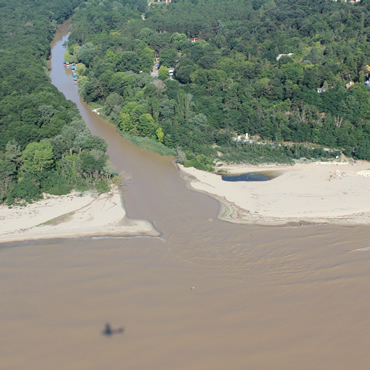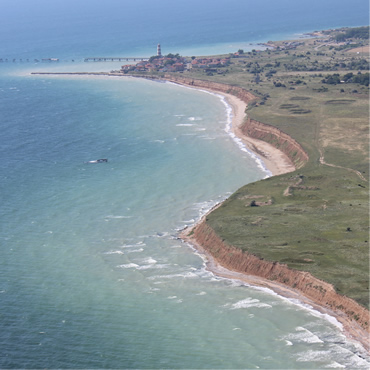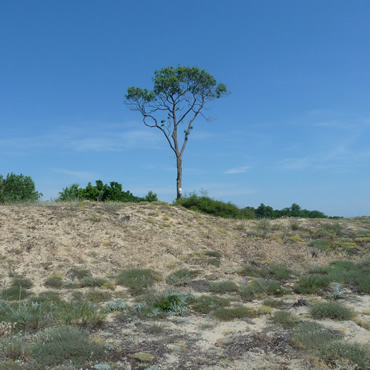Delayed
Type of resources
Available actions
Topics
INSPIRE themes
Keywords
Contact for the resource
Provided by
Years
Formats
Representation types
Update frequencies
Resolution
-
Map of Chlorophyll trends (UNITS: mg/m3/year) from L4 satellite ocean color data FOR THE PAST 10 YEARS (2005-2014)
-
The EMODnet OPL-Bulletin contains the simulation of the fate and transport of oil leaks from platforms. The oil movement from the platform is simulated for a 72 hours after the release and the bulletin could be updated depending on the customer request. Possible impacts on the coasts are also considered. The EMODnet OPL-Bulletin is issued every time a request arrives and it is released within 24 hours from the alert using a pre-defined template. The Customer (the EC and other users allowed by EC) supplies the specific data through an online input data form.
-
We took inspiration from a “Matrix of marine activities” (appropriate for each IUCN management category) extracted from IUCN paper, to achieve the first objective by computing 1 product comprising the following 12 components: Product ATLANTIC_CH02_Product_1 / MPA Atlantic network classified in IUCN classification • Traditional fishing area • Sustainable fishing area (industrial) • Leisure fishing area • Leisure activity area (diving, surfing, tourist beaches) • Shipping area (shipping trajectory, aids navigation) • Scientific activity area • Renewable energy generation facility area (ocean energy facilities, wind farms) • Aquaculture area (finfish production, shellfish production) • Shipping infrastructure area (harbours, dredging area...) • Waste discharge area • Mining area (aggregate extraction, hydrocarbon extraction) • Habitation area (urban area) Each geographic information required for the components was compiled into a layer in grid format. These grids were intersected with the MPAs layer to assign each MPA a IUCN category according to the conditional matrix illustrated below : If the MPA area contains : Habitation area (urban area) The IUCN category is :V If the MPA area contains : Mining area (aggregate extraction, hydrocarbon extraction) The IUCN category is V If the MPA area contains : Waste discharge area The IUCN category is : V If the MPA area contains : Shipping infrastructure area (harbours, dredging area...) The IUCN category is IV If the MPA area contains : Aquaculture area (finfish production, shellfish production) The IUCN category is IV If the MPA area contains : Renewable energy generation facility area (ocean energy facilities, wind farms) The IUCN category is IV If the MPA area contains : Leisure fishing area The IUCN category is IV If the MPA area contains : Sustainable fishing area (industrial) The IUCN category is IV If the MPA area contains : Shipping area (shipping trajectory, aids navigation) The IUCN category is II If the MPA area contains : Leisure activity area (diving, surfing, tourist beaches) The IUCN category is Ib If the MPA area contains : Traditional fishing area The IUCN category is Ib If the MPA area contains : Scientific activity area The IUCN category is Ia
-
The impact of fishing on benthic habitats has previously been investigated however; a conclusive classification of potentially sensitive habitats per gear type does not exist. Currently only qualitative estimates of fishery impact using Broad-scale habitat maps are possible. Here a sensitivity matrix using both fishing pressure (fishing Intensity) and habitat sensitivity is employed to define habitat disturbance categories. The predominant fishing activities associated with physical abrasion of the seafloor area are from bottom contacting towed fishing gear. The swept area of the aforementioned gear in contact with the seabed is generally considered a function of gear width, vessel speed and fishing effort (ICES. 2015). The varying characteristics of fishing gear, their interaction with the sea floor and species being targeted; provide scope for differing interactions with subsurface (infaunal) and surface (epifaunal) dwelling communities. An evaluation of the abrasion pressure and habitat sensitivity split into surface and subsurface pressure allows greater insight to the ecological effects. Fishing intensity was calculated annually and based on the area of sea floor being swept (or swept area ratio SAR) by gear type. Calculations are based on SAR’s of gear types per area, per year. Fishing pressure ranks and habitat sensitivity ranks obtained from WGSFD working group (01 WGSFD - Report of the Working Group on Spatial Fisheries Data 2015) can be incorporated within a GIS environment to existing ICES fisheries data to provide habitat disturbance maps (fishing pressure maps+ habitat sensitivity maps) ICES. 2015. Report of the Working Group on Spatial Fisheries Data (WGSFD), 8–12 June 2015, ICES Headquarters, Copenhagen, Denmark. ICES CM 2015/SSGEPI:18. 150 pp.
-

-

-

-

-

-

 Metadata catalogue
Metadata catalogue